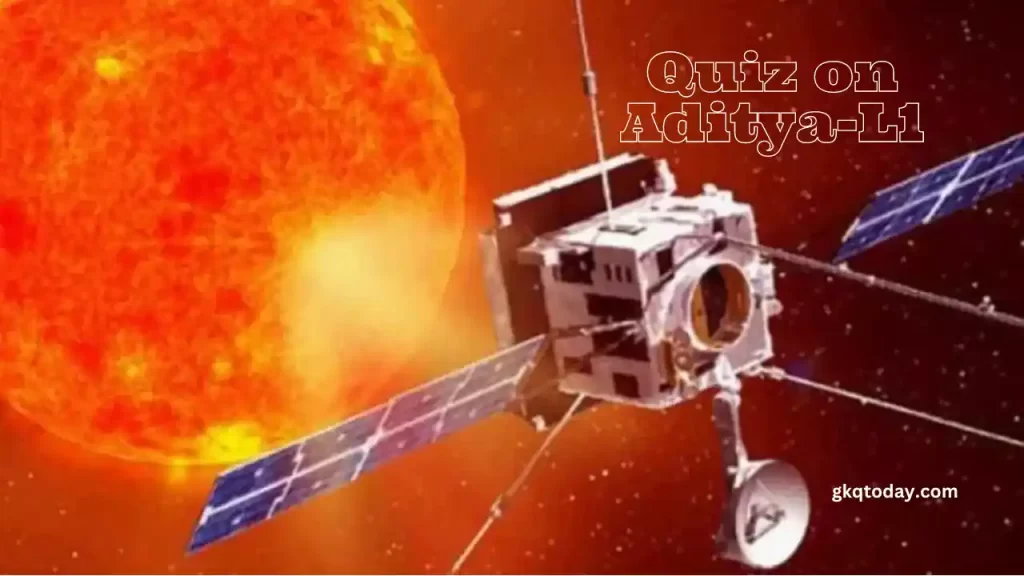
The Indian Space Research Organization (ISRO) is targeting several space missions this year. First, we will soon experience the historic Mission Chandrayaan-3 landed on August 23, 2023, ISRO is also planning to launch a spacecraft that will study the Sun, its environment, solar flares, and solar storms. Will study Coronal Mass Ejection, and many more. With a big plan ahead this year, we’re excited to see what new studies and discoveries will reveal about our Sun and Moon. Know in detail about the Surya Mission.
About Aditya L1 mission
Aditya L1 mission will be India’s first solar mission that will study the Sun for nearly 5 years. The ISRO PSLV rocket spacecraft is set to take flight from Sathish Dhawan Space Centre SHAR (SDSC SHAR), Sriharikota on 2 September 2023.
According to an ISRO report, the spacecraft will have seven scientific payloads to study the sun from different angles. The spacecraft will be placed in low Earth orbit (LEO) in the Lagrange point L1 of the Earth-Sun system. The position is perfect for scientists to study the Sun without any blockage from the region.
The mission will get insight into the Sun’s photosphere, chromosphere, and the outermost layer. Throughout the mission, it aims to study the solar atmosphere, solar wind, coronal heating, coronal mass ejections (CMEs), solar flares, and more.
Aditya L1 mission UPSC Quiz with Answer
Q1. Which is the Sun mission of ISRO?
[A] XPoSAT
[B] NISSAR
[C] Aditya-L1
[D] LUPEX
Q2. When Aditya-L1 will be launched by ISRO?
[A] September 2, 2023
[B] September 12, 2023
[C] October 2, 2023
[D] August 28, 2023
Q3. Which is the rocket used to launch Aditya-L1?
[A] LVM3
[B] PSLV-XL
[C] NGLV
[D] GSLV
Q4. Where Aditya-L1 spacecraft will be placed in the halo orbit of the Sun-Earth System?
[A] Lagrange point 1 (L1)
[B] Lagrange point 2 (L2)
[C] Lagrange point 3 (L3)
[D] Lagrange point 4 (L4)
Q5. What is the distance of the halo orbit (Lagrange point L1) from the Earth?
[A] 1 million km
[B] 1.5 million km
[C] 2 million km
[D] 5 million km
Q6. How many payloads will be carried by the Aditya-L1 spacecraft?
[A] 5 payloads
[B] 7 payloads
[C] 9 payloads
[D] 12 payloads
Q7. What is the objective of Aditya-L1 mission?
[A] To study Solar upper atmospheric (chromosphere and corona) dynamics.
[B] To study chromospheric and coronal heating, the physics of the partially ionized plasma
[C] To observe the in-situ particle and plasma environment.
[D] all of the above.
Q8. Which is the remote sensing payload of the Aditya-L1 mission?
[A] The Visible Emission Line Coronagraph
[B] Solar Ultraviolet Imagining Telescope (SUIT)
[C] Solar Low-Energy X-ray Spectrometer (SoLEXS)
[D] All of the above
Q9. Who is the Principal Scientist of the Aditya-L1 mission?
[A] Dr. Sankarasubramanian K.
[B] S R Sankarasubramanian
[C] Ramachandran Sankarasubramanian
[D] Shrihari Sankarasubramanian
Q10. How much does the Aditya-L1 mission cost?
[A] ₹ 300 crore
[B] ₹ 378.53 crore
[C] ₹ 478.53 crore
[D] ₹ 578.53 crore
Read More:-
- Mission Chandrayaan 3 GK Questions and Answers
- Best Collection GK Questions for Class 5
- Best Collection GK Questions for Class 4
- Best Collection GK Questions for Class 3
- Best Collection GK Questions for Class 2
- Best Collection GK Questions for Class 1
FAQ
When Aditya-L1Mission will be launched?
ISRO plans to launch the Aditya L1 Mission on September 2, 2023.
